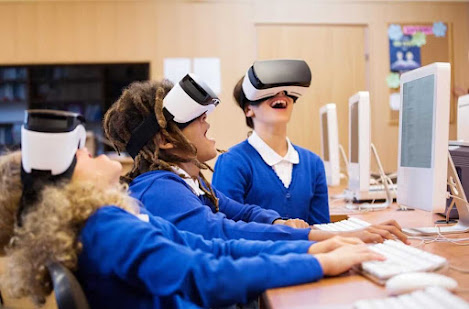The doors to the Metaverse are open to anyone who wants to go there, thanks to the many platforms that helped make it happen.
Gartner’s most recent study says that by 2026, about 25% of the world’s population will spend at least one hour a day in the Metaverse doing things like learning, working, shopping, meeting people, and having fun. Based on this study, we can say that the Metaverse development services will soon be something we do every day.
Metaverse is a great place to meet people from all over the world virtually. Did you know that the Metaverse education platform can make sure that education is thorough, immersive, social, and fair? It opens up new ways for people to learn. Students and teachers from anywhere can use the virtual reality headset to log in to a virtual space and talk to other people.
Let’s look at How Metaverse Is Impacting Learning!
Immersive Virtual Campus
Before and during the Covid19 pandemic, learning had already started to move from physical classrooms to more mixed spaces. Immersive campus life is made easier by the metaverse. In this world, students need VR headsets to enter the virtual campus, where they can learn, explore, and meet new people.
Make it Easier for Students with Disabilities
The metaverse could make it easier for students with disabilities to learn and make friends. For example, an immersive environment gives kids and people with special needs like autism or problems with social interaction more chances to learn. In fact, they can play soccer, hang out with friends, or go to faraway places by using VR goggles.
Build People Capabilities in Tough Situations
The students can also learn things like how to communicate, lead, listen, and have empathy. The metaverse makes this possible by putting students in real-world conflicts and giving them a safe place to practice their soft skills. Some of the first ways this new way of learning has been used are with 3D simulations, virtual campuses, and activities that are like games.
Improve Data Capture on Learning Performance
Metaverse Development can make learning experiences that are amazing. It lets organizations collect data that hasn’t been used before to learn more about how learners act, track their progress, find gaps, and improve the learning experience all the time. Performance, attention, and engagement are all useful measures of how a learner is doing.
Able to Reach More Students
The bigger the market, the more likely it is that a business will grow in that field. The metaverse will give us the chance to grow within the market we already have. It will make a new market or make new markets near it. In the field of education, the development of the metaverse helps us figure out how to get students’ attention in new ways.
Adopt the Virtual Method to Learn and Teach
The door to the metaverse is the new generation of VR headsets. Head-mounted VR displays take over all of your senses and give you an unbeatable sense of being there. Users can move around freely in a 3D scene and use their hands to interact with the world around them, just like they would in real life. VR technology is becoming cheap enough to close gaps in global skills.
VR can teach anything, from how to farm to how to fight fires. Spatial training is a skill that can be used to make the most of the different strengths of the metaverse. Other examples include simulating routines, emergencies, stressful situations at work, important procedures, and high-impact events in a safe, controlled environment. This can be done over and over again until it becomes second nature.
How is the Metaverse a Great Environment for Learning?
Even though it might not seem important, the metaverse gives us the chance to make social spaces where people can learn and share experiences in a more interesting way.
· Immersive environments that are well-made and make it easy to interact allow for more focused learning sessions. In turn, that makes it easier for both teachers and students to reach certain learning goals.
· With the development of the metaverse, students can easily grab learning objects and walk around them. They can also be immersed in historical events, among other things. This was shown to improve learning retention, which is the ability to keep meeting the learning outcomes over a long period of time.
· With the metaverse, learning is easier and more fun. There are many ways in which this technology helps the education field. Students and teachers can use virtual classrooms to attend classes on the metaverse education platform. It gives professors the chance to act out real-life situations to better explain their theory and content. This technology also saves money for professors when they drive to work or buy lab tools and equipment for experiments. You could say that metaverse is the next step up in online learning.
Bottom Line
If the metaverse education platform is set up right, it can open up whole new ways to teach. Teachers can act out real-life situations with the help of avatars and role-playing techniques. Another option is to encourage collaborative problem-solving, in which students work together to find answers.
Metaverse is the next step in the evolution of education, which has moved from using teaching aids to using augmented reality to make learning more interesting. Education in the metaverse has a lot of advantages when it comes to teaching both theory and practice. It helps students improve their operational skills, gives them a more immersive way to learn, and gets them more involved in class, which makes learning more active.

